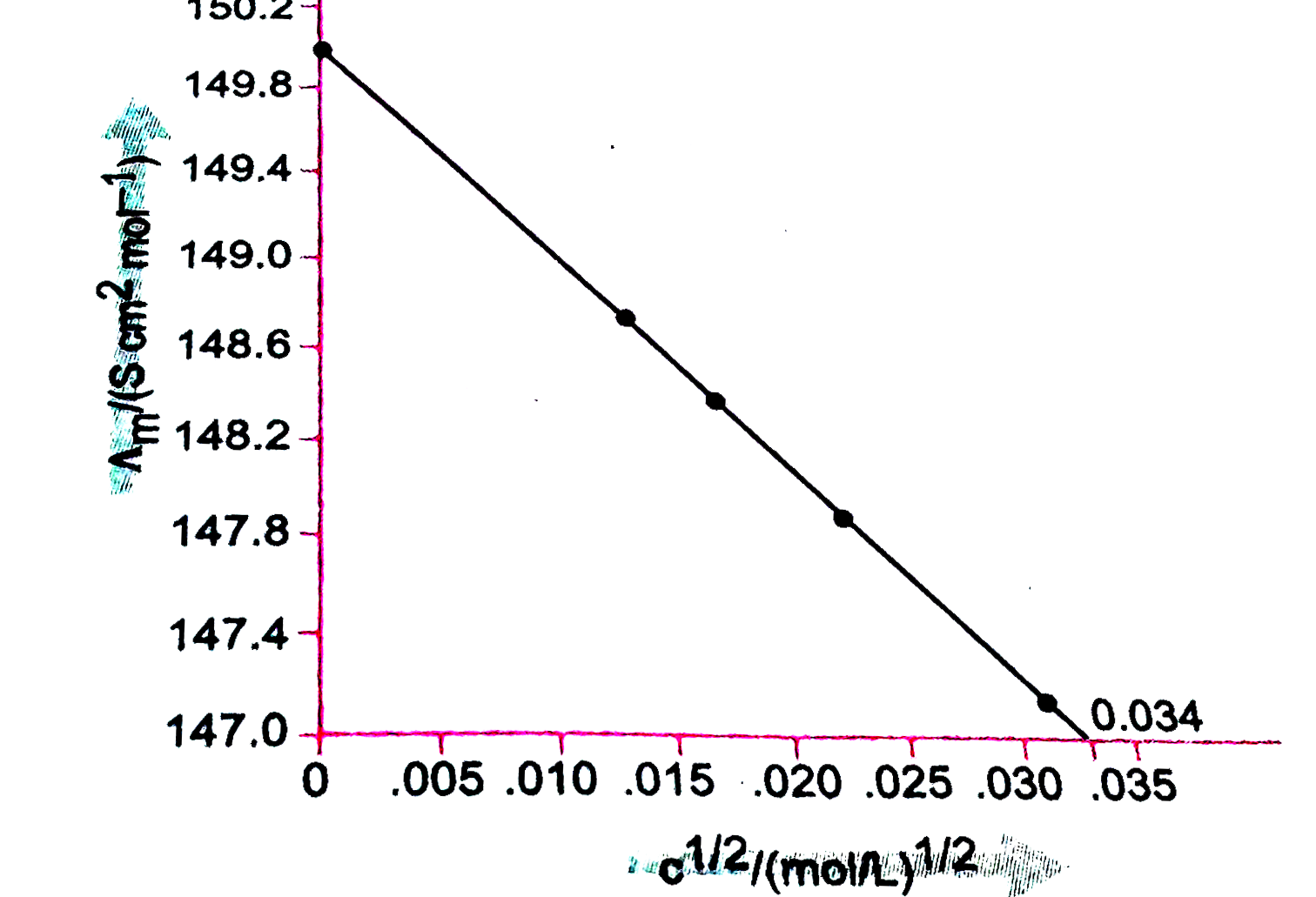Saved Bookmarks
| 1. |
The molar conductivity of KCl solution at different concentrations at 298K are given below: {:(c//mol" "L^(-1),wedge//S" "cm^(2)mol^(-1),c//mol" "L^(-1),wedge//S" "cm^(2)mol^(-1)),(0.000198,148.61,0.000521,147.81),(0.000309,148.29,0.000989,147.09):} Show that the plot between wedge and c^(1//2) is a straight line. determine the values of wedge^(@) and A for KCl. |
|
Answer» Solution :Taking the SQUARE root of concentration, we obtain `{:(c^(1//2)(mol" "L^(-1))^(1//2),wedge_(m)//S" "CM^(2)mol^(-1)),(0.01407,148.61),(0.01758,148.29),(0.02283,147.81),(0.03154,147.09):}`  A plot of `wedge_(m)` (y-axis) and `c^(1//2)` (x-axis) is shown in the ADJOINING fig: It can be seen that it is nearly a straight LINE. from the intercept (i.e., when `c^(1//2)=0`), we find that `wedge_(m)^(@)=150.0" S "cm^(2)mol^(-1)` and `A=-"slope"=(Deltay)/(Deltax)=(150.0-147.0)/(0.034)` `=88.23" S "cm^(2)mol^(-1)//(mol//L^(-1))^(1//2)`. |
|
Discussion
No Comment Found
Related InterviewSolutions
- Which of the following compounds is not cleaved by HI even at 525 K ?
- To a 25 mL H_(2)O_(2) solution excess of an acidified solution of potassium iodide was added. The iodine liberated required 20 " mL of " 0.3 N sodium thiosulphate solution Calculate the volume strength of H_(2)O_(2) solution.
- The suggested mechanism of a reaction is : (a) A+BhArrD("fast) "(b)A+Drarr2C("slow")Write the balanced equation of the reaction if its experimentally deduced rate equation is , rate k=[A]^(2)[B] Find the intermediate formed during the course of the reaction . Does the predicted rate law from the mechanism match the experimental rate law ?
- Which of these changes with time for a first-order reaction A Rate of reaction B . Rate constant C . Half-life
- What is the hybridisation of central atom in the product obtained along with hydrofluoric acid when complete hydrolysis of Xenon Hexa Fluoride takes place ?
- Which of the following amino acid forms sulphide bond in polypeptide
- Which of following pair is Diastereomers:
- What is the major product of the following reaction CH_3C-=C-CH_2-CH_3overset("1 mole of " Cl_2)to
- Which polymer is used in petrol tank linings ?
- Which of the following carbohydrates are branched polymer of glucose ?